January 04, 2014
To the Mun (Tutorial) Part One: The Rocket
Hello ladies and gentlekerbs, and welcome to the Kerbal Space Center. My name is Bob Kerman, and I'm an astronaut of the Royal Squirrel Patrol Space Force. Today I'll be giving you an overview of a project Kerbysseus flight to the Mun and back. Let's start with the details of the Ikerbus-Kerbysseus rocket.
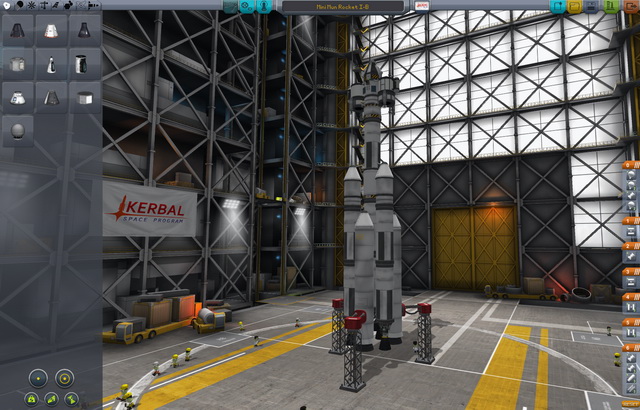
Let's start up at the top of the stack, with the Kerbysseus munar lander. At the top of the lander, we have our trusty capsule. This capsule, in combination with our personal space suit, is sufficient to keep an astronaut hale and healthy, protecting us from extremes of temperature, radiation, and pressure. We've attached three parachutes to this capsule to make sure it lands safely, as well as a powerful communications system to let us communicate back to the KSC from anywhere we're likely to go.
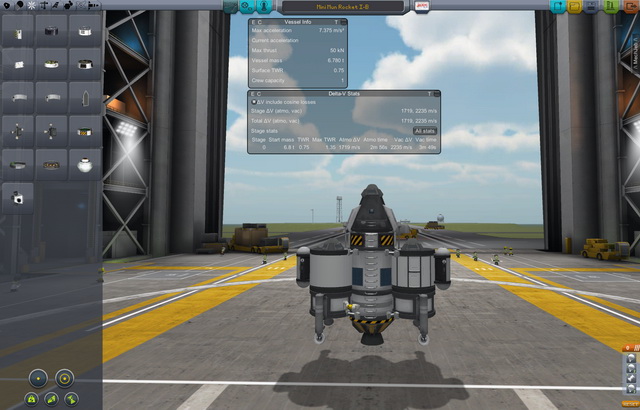
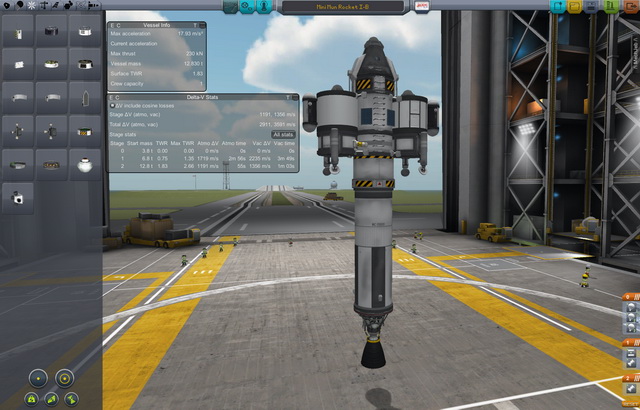
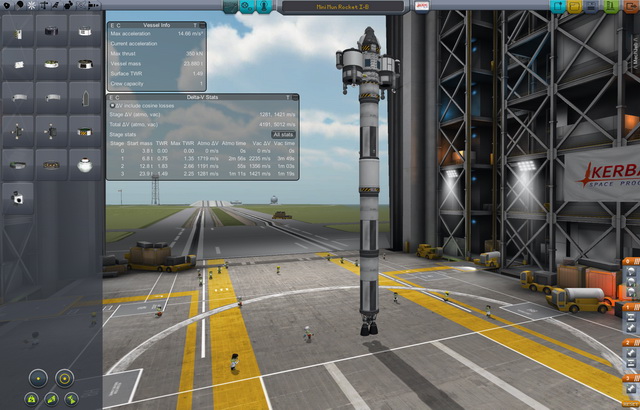
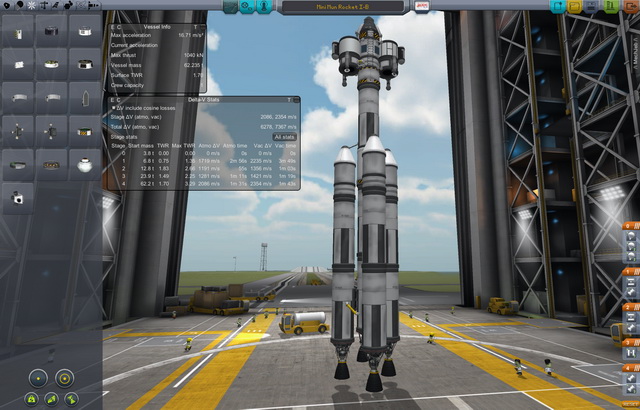
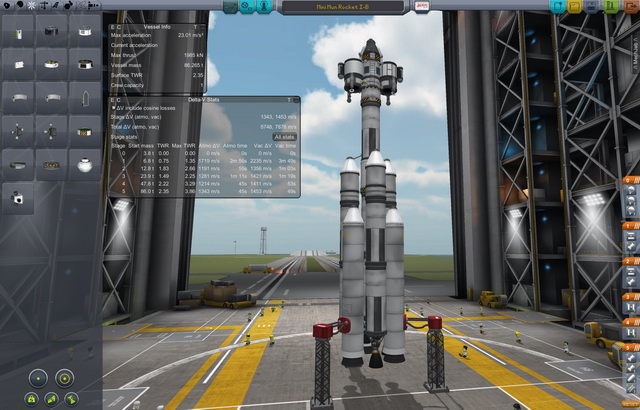
Comments are disabled.
Post is locked.


Attached to the capsule, we have a rocket motor and three fuel tanks. We also have a variety of scientific instruments, including two materials science bays, two mystery goo observation units, thermometers, radiometers, and barometers. There are also several small solar panels and a reserve battery, as well as a ladder to assist in getting in and out of the capsule, retractable landing legs, and additional parachutes.
The complete lander has a mass of just over 7 tons, and the rocket can fire at full thrust for nearly 4 minutes, producing 2,235 meters per second of delta-V. It's truly an impressive item of Kerbal engineering and industry, and we here at the KSC are quite proud of it.
Below the lander, attached via an explosive decoupling device, we have the top stage of the Ikerbus launch rocket.

This rocket stage is quite simple, being nothing more than a single fuel tank and medium power rocket engine. This rocket has significantly more thrust than the lander engine, but as it has a similar amount of fuel and is somewhat less efficient, it does not have the same capacity. However, it's quite well suited for it's role of transferring the lander from a Kerbin orbit to a Mun orbit.
Below the transfer stage, we have the central core of the launch stage. This stage is equipped with a high power dual rocket engine, and twice the fuel of the transfer stage. It's got the power and endurance to get the rocket from the edge of space into a departure holding orbit, but only just. This is probably the weakest part of the platform, and our engineers are hard at work designing improvements.

In a ring around the core booster, we have three booster rockets that are similar, but they have a small bit of extra fuel and an aerodynamic fairing at the top. They are also equipped with fuel pumps and pipelines that sacrifice their own fuel to keep the central booster at full capacity until they run out. These boosters serve to carry the central core out of the thickest part of the atmosphere and up to hypersonic speeds before running out of fuel and being ejected.

Finally, nestled in between the three primary flight boosters, we have three solid rocket launch boosters. These provide the extra thrust to get the whole rocket off the launch pad and headed out of the thickest part of the atmosphere. The run dry fairly quickly, being exhausted and discarded only 6 kilometers or so into the flight, but their extra thrust is critical during the launch phase with a fully loaded rocket massing in at 86 tons sitting stationary on the launch pad.

Posted by: TheSquirrelPatrol at
04:08 AM
| No Comments
| Add Comment
Post contains 596 words, total size 5 kb.
12kb generated in CPU 0.0225, elapsed 0.0945 seconds.
34 queries taking 0.0788 seconds, 54 records returned.
Powered by Minx 1.1.6c-pink.
34 queries taking 0.0788 seconds, 54 records returned.
Powered by Minx 1.1.6c-pink.









